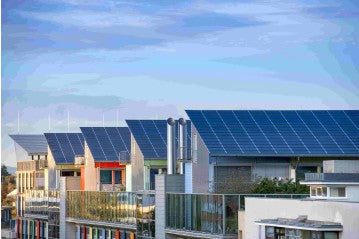
The allure of RV travel lies in the freedom to explore the great outdoors while enjoying the comforts of home on wheels. However, ensuring a reliable and sustainable power source can be a challenge. That's where solar power comes in. In this comprehensive guide, we'll walk you through the process of installing a solar inverter charger in your RV, empowering you to harness the sun's energy and make your adventures more eco-friendly and self-sufficient.
Understanding Solar Inverter Chargers
Before delving into the installation process, it's crucial to understand what a solar inverter charger is and how it benefits your RV lifestyle. A solar inverter charger is a device that converts solar energy into usable electricity and stores it in your RV's batteries. It not only charges your batteries but also transforms the DC power into AC power, allowing you to use your regular electrical appliances on the go.
Pre-Installation Preparation
To ensure a successful installation, it's important to perform some pre-installation preparations. Start by assessing your power requirements and energy consumption. This evaluation will help you determine the optimal solar panel capacity and battery size for your RV. Additionally, conducting an electrical system inspection will ensure compatibility and identify any necessary upgrades.
Choosing the Right Solar Inverter Charger
When it comes to selecting a solar inverter charger for your RV, it's vital to choose a reputable brand and model. Look for features such as power output, efficiency ratings, and compatibility with your existing RV electrical system. It's also beneficial to read user reviews and seek expert opinions to make an informed decision.
Installation Process
Now that you've done your homework, it's time to install your solar inverter charger. Gather the necessary tools and materials, and find a suitable spot for the installation. Mount the solar panels securely on your RV roof, ensuring they are positioned optimally to capture the most sunlight. Next, connect the solar panels to the solar inverter charger, install the battery bank, and make the necessary connections. Finally, integrate the solar inverter charger with your RV's electrical system, verifying proper wiring and making any adjustments.
Testing and Commissioning
Once the installation is complete, it's crucial to test and commission your solar inverter charger. Check the functionality of the system, verify the charging process, and monitor battery performance. Test the power output and keep a close eye on energy production. If any issues arise, troubleshoot them promptly and seek professional assistance if needed.
Maintenance and Troubleshooting
To ensure optimal performance and longevity of your solar inverter charger, regular maintenance is key. Clean and inspect the solar panels regularly to remove any dirt or debris that may obstruct sunlight. Monitor the health and performance of your batteries, and address any concerns promptly. Familiarize yourself with common issues and their solutions, and seek professional help if necessary.
Optimizing Solar Power Usage
To make the most of your solar power system, implement energy-efficient practices in your RV. Consider using energy-saving appliances and LED lighting. Utilize smart energy management systems and monitoring tools to track and optimize your power consumption. Remember, proper positioning and regular maintenance of your solar panels will maximize energy generation.
Conclusion
Congratulations! By installing a solar inverter charger in your RV, you've taken a significant step towards energy independence and sustainable travel. With this comprehensive guide, you now have the knowledge to embrace solar power and make your RV adventures more eco-friendly and cost-effective. Enjoy the freedom of the open road, powered by the sun's abundant energy!
Remember, choosing the right solar inverter charger, following proper installation procedures, and conducting regular maintenance will ensure optimal performance. Embrace solar power and embark on an adventure that leaves a lighter footprint on our planet.
So, why wait? Take the leap and let solar power transform your RV into a sustainable oasis of comfort and convenience.


0 Kommentare